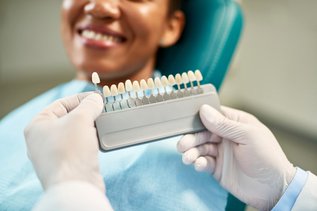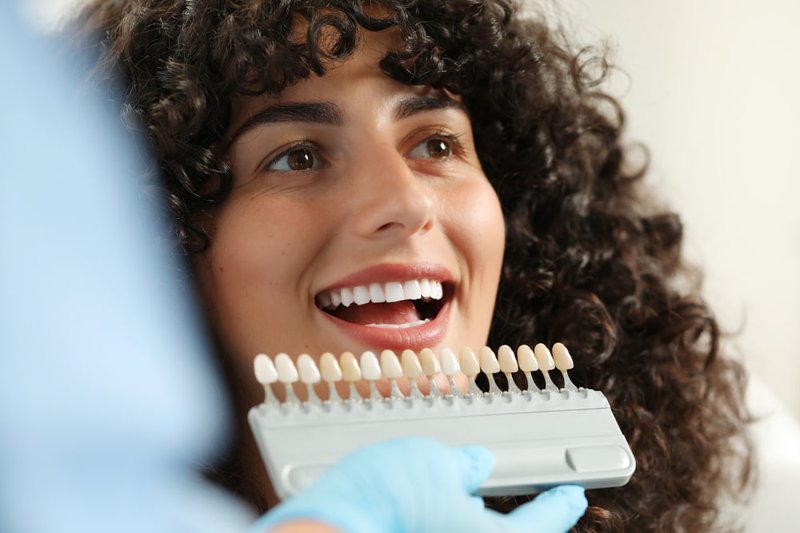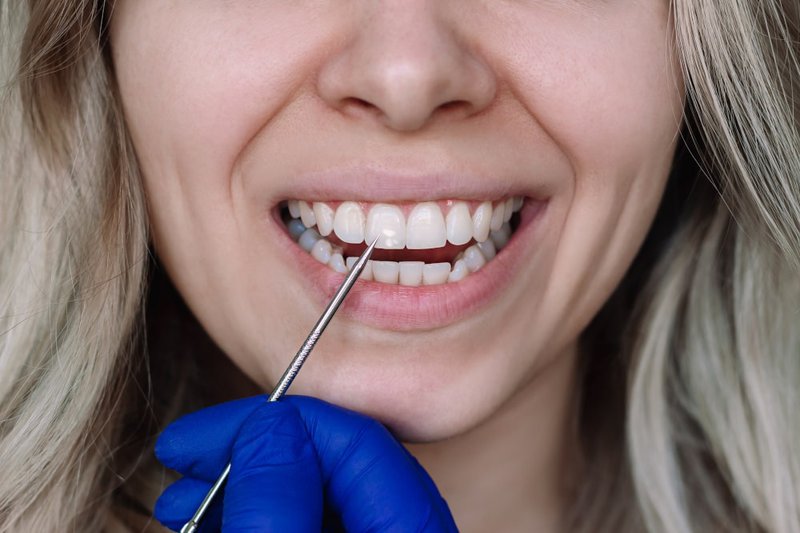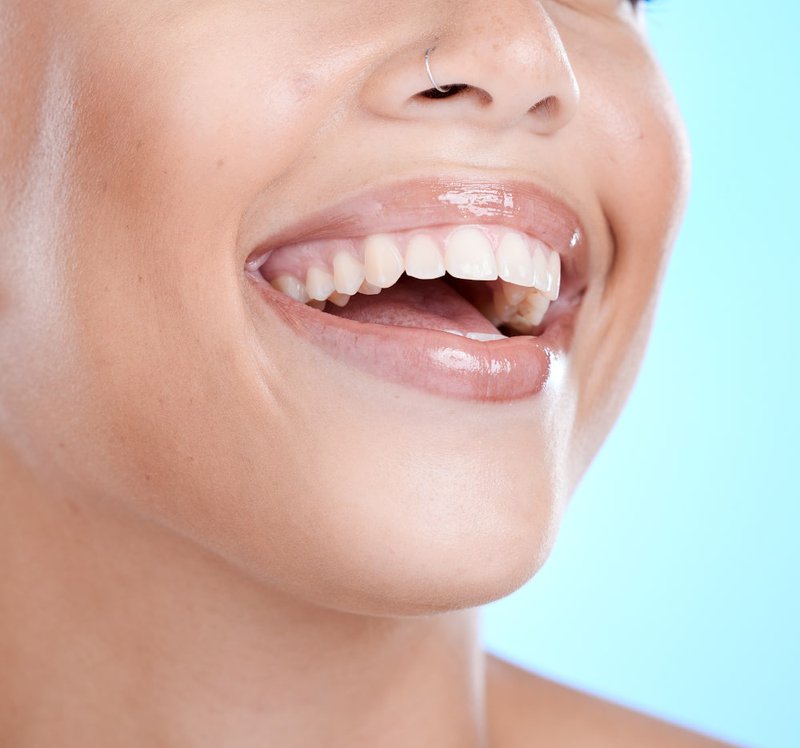
Teeth Bonding vs. Veneers: Which Smile Makeover Suits You?
Key Takeaways
- Teeth bonding and veneers serve different purposes: bonding is a quick, affordable solution ideal for minor cosmetic fixes, such as small chips, gaps, and mild discoloration. Veneers are better suited for major smile makeovers, offering superior durability and aesthetics, especially for severe discoloration or structural corrections.
- Durability varies significantly: Bonding lasts on average 3–10 years and may require periodic touch-ups, while veneers typically last 10–20 years with proper care, providing a longer-lasting investment.
- Procedure complexity and time differ: Bonding typically completes in a single visit without requiring enamel removal, making it a reversible procedure. Veneers require enamel removal, multiple visits, and lab fabrication, making the process more involved and irreversible.
- Cost considerations: Bonding has a lower initial cost, but veneers may offer better long-term value due to their longevity and resistance to staining.
- Maintenance: Bonding materials are more prone to staining and chipping, whereas porcelain veneers resist stains better and require less frequent maintenance.
Personalized choice: The best option depends on individual goals, lifestyle, oral health, and budget, underscoring the importance of professional consultation.
What is the difference between teeth bonding and veneers?
Cosmetic dentistry has evolved into a key solution for enhancing not only smiles but also confidence and overall facial aesthetics. Among the most popular procedures are teeth bonding and veneers, both of which are widely offered at reputable clinics. But what exactly distinguishes these two?
Teeth Bonding
Definition: Dental bonding involves applying a tooth-coloured composite resin to the teeth to correct minor imperfections.
Primary Materials Used: Composite resin — specifically designed to match the natural colour of your teeth.
Application Process:
- The dentist selects a resin shade that matches your tooth colour.
- The tooth surface is roughened and a conditioning liquid is applied.
- The resin is moulded and smoothed.
- A special light hardens the resin.
- Final adjustments and polishing are done.
Key Features:
- Ideal for minor cosmetic repairs.
- Completed in a single visit.
- Reversible procedure.
Veneers
Definition: Veneers are thin shells — usually made of porcelain or composite — that cover the front surface of teeth to improve appearance.
Main Materials Used: Porcelain or composite resin.
Application Process:
- A thin layer of enamel is removed from the tooth surface.
- An impression of the tooth is made.
- The veneer is custom-made in a dental lab.
- The veneer is bonded to the tooth with special cement.
- The dentist adjusts and polishes the veneer for a perfect fit.
Key Features:
- Best for major aesthetic transformations.
- Requires multiple visits.
- Irreversible process (enamel removal).

Comparison Table: Bonding vs. Veneers
| Feature | Teeth Bonding | Veneers |
|---|---|---|
| Material | Composite Resin | Porcelain or Composite Resin |
| Durability | 3–10 years | 10–20 years |
| Application Time | Single visit (30–60 mins) | Multiple visits |
| Reversibility | Yes | No |
| Aesthetic Quality | Good but less lifelike | Excellent, highly natural look |
| Ideal For | Minor chips, gaps, discolouration | Primary colour and shape corrections |
| Enamel Removal | Minimal or none | Required |
Dr. Jacklyn Pivovarov, North York Smile Centre:
"Choosing between bonding and veneers is a highly personalized decision. For patients seeking quick and affordable solutions for minor imperfections, bonding offers excellent results with minimal intervention. However, for those looking to transform their smile with long-lasting, natural aesthetics, veneers are often the preferred choice."
What are the pros and cons of dental bonding vs veneers?
Pros and Cons Comparison Table
| Factor | Teeth Bonding | Veneers |
|---|---|---|
| Pros | - Affordable initial cost - Quick single-visit procedure - Minimal enamel removal | - Superior aesthetic appearance - Highly stain-resistant - Long lifespan (up to 20 years) |
| Cons | - Less durable (prone to chipping/staining) - Requires more frequent maintenance - Aesthetic limitations compared to porcelain | - Higher initial cost - Irreversible enamel removal - Requires multiple visits |
| Ideal Patient Profiles | Bonding is best for: - Small chips or gaps - Minor discolorations - Patients seeking a budget-friendly, temporary solution. | Veneers are best suited for: - Major smile makeovers - Severe discolorations or misalignments - Patients seeking a long-lasting result. |
Is teeth bonding or veneers more cost-effective in the long term?
Factors Influencing Cost:
| Factor | Teeth Bonding | Veneers |
|---|---|---|
| Material Used | Composite resin | Porcelain or composite resin |
| Extent of Treatment | Single tooth or small areas | Complete smile makeover or multiple teeth |
| Complexity of Case | Simple corrections (chips, gaps) | Complex corrections (colour, shape, alignment) |
| Dentist's Expertise | General cosmetic procedures | Requires specialist cosmetic expertise |
| Lab Fees | Minimal (in-clinic application) | Significant (custom lab-made veneers) |
| Number of Appointments | One visit | Multiple visits |
Long-Term Considerations
- Bonding may need replacement every 3–7 years, depending on care and lifestyle.
- Veneers typically last 10–20 years, especially those made of porcelain.

How long do teeth bonding and veneers typically last?
| Procedure | Average Lifespan |
|---|---|
| Teeth Bonding | 3–10 years |
| Veneers | 10–20 years |
Factors Affecting Durability:
- Oral hygiene practices
- Bite forces and habits (e.g., grinding)
- Material quality
- Frequency of dental care visits
Tips to Extend Longevity:
- Avoid biting hard objects
- Use night guards if grinding.
- Maintain excellent oral hygiene
- Schedule regular cleanings
Dr. Mitchell Dzaldov, North York Smile Centre:
"There is no one-size-fits-all solution in cosmetic dentistry. The patient's oral health, cosmetic goals, and lifestyle must guide the treatment plan. Bonding is great for temporary or minor corrections, but veneers provide superior durability and aesthetic benefits for more complex cases."
Which option is better for chipped or cracked teeth: bonding or veneers?
| Damage Severity | Recommended Treatment |
|---|---|
| Minor chips | Bonding (affordable, quick) |
| Moderate cracks | Veneers (stronger, aesthetic) |
| Severe damage | Veneers or crowns |
Dentist Recommendations:
Bonding for Minor Repairs:
Bonding involves applying a special composite material to the tooth's surface. This method is ideal for correcting minor defects such as small chips, minor enamel flaws, or small gaps between teeth. It provides quick cosmetic fixes and requires minimal enamel removal.
Veneers for Structural Strength:
Veneers are thin ceramic shells bonded to the front surface of teeth. They are used to enhance the appearance of teeth, giving them a natural and healthy look. Veneers provide structural integrity and are particularly effective in addressing cosmetic issues such as discoloration, uneven spacing, or minor alignment problems.

Can dental bonding or veneers help with severe tooth discoloration?
| Issue | Bonding | Veneers |
|---|---|---|
| Mild Discoloration | Effective | Effective |
| Severe Discoloration | Less effective | Highly effective |
Maintenance Tips:
Bonding: The composite material used in bonding is more prone to staining over time, especially from coffee, tea, and smoking. Regular cleaning and occasional polishing by your dentist can help maintain its appearance.
Veneers: Made from porcelain, veneers are much more resistant to stains and discoloration, making them a longer-lasting solution for severe tooth discoloration.
What is the recovery and aftercare process for bonding vs veneers?
Post-Treatment Care Guide:
| Aspect | Teeth Bonding | Veneers |
|---|---|---|
| Diet Restrictions | Avoid staining foods (24–48 hours) | Soft diet for a few days |
| Sensitivity | Possible mild sensitivity (days) | Sensitivity to hot/cold (1–2 weeks) |
| Activity Limit | None beyond food caution | Avoid hard biting for 1–2 weeks |
| Follow-Up | Rarely required | Needed to check the veneer fit |
Are there any risks or side effects to consider when considering bonding or veneers?
| Risk/Side Effect | Teeth Bonding | Veneers |
|---|---|---|
| Sensitivity | Short-term, mild | Possible longer-lasting (weeks) |
| Gum Irritation | Rare | Possible if the veneer fit is poor |
| Chipping/Breakage | More likely | Less likely |
| Colour Mismatch | Possible over time | Rare (especially with porcelain) |
How does the procedure time differ for bonding compared to veneers?
| Procedure Aspect | Teeth Bonding | Veneers |
|---|---|---|
| Appointment Length | 30–60 minutes per tooth | 1–2 hours per visit |
| Number of Visits | Usually 1 | Typically 2–3 |
| Lab Involvement | None (done chairside) | Required (lab-made veneers) |
Conclusion: Which is right for your smile – bonding or veneers?
Summary Table of Key Differences:
| Feature | Teeth Bonding | Veneers |
|---|---|---|
| Cost Efficiency | Lower initial cost | Higher initial investment |
| Durability | 3–10 years | 10–20 years |
| Procedure Time | Single visit | Multiple visits |
| Aesthetic Quality | Good | Excellent, natural look |
| Recommended for | Minor chips, gaps, and minor colour issues | Major smile makeovers, severe discoloration |
| Maintenance | Requires touch-ups | Minimal with good care |
| Enamel Removal | Minimal | Required |
Expert Recommendations:
- Choose bonding if you want an affordable, reversible fix for minor flaws.
- Select veneers for a comprehensive and long-lasting smile transformation.
Sources Used:
- https://www.phdental.com/oral-health-news/2025/may/cosmetic-bonding-vs-veneers-which-smile-solution/
- https://www.cda-adc.ca/en/oral_health/procedures/cosmetic.asp
- https://www.aacd.com/procedures
- https://www.mayoclinic.org/tests-procedures/dental-veneer/about/pac-20384980

